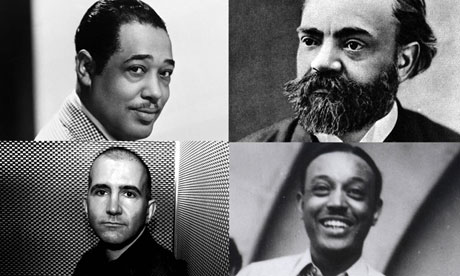
When Dvořák came to New York from Bohemia in the 1890s, he imagined a new kind of American classical music based on African American folk tunes and spirituals. The result was his New World Symphony. Two decades later, Edgard Varèse emigrated to New York from France and made his own, distinctly urban music for the new world by embracing noise: the wail of sirens, the rattle of elevated railways and the clanking construction of skyscrapers all found their way into his scores. Meanwhile, Connecticut-born Charles Ives, a part-time composer and full-time insurance executive, was forging a new kind of home-grown American modernism in which a misty nostalgia for hymn tunes and marching-band music lived side by side with a futuristic and sometimes wacky experimentalism. Perhaps the most instantly recognisable sounds of American classical music are the wide-open harmonies, hoedowns and folk tunes of Aaron Copland. Born in Brooklyn to Lithuanian Jews and trained in Paris, Copland’s best known music is written in a so-called Americana style which he adopted in the 1930s and 40s, and is still aped today in film scores and backing tracks to patriotic political videos. But he was also powerfully drawn to European modernism, as were other American composers, including Ruth Crawford Seeger and a young Elliott Carter. As the century grew older, political oppression and a second war in Europe brought more richness to American musical life; composers including Stravinsky, Schoenberg, Kurt Weill, Korngold and Rachmaninoff took refuge there, creating many of their great works for concert hall, opera house, movie theatre and the musical stage on American soil.


Share it people